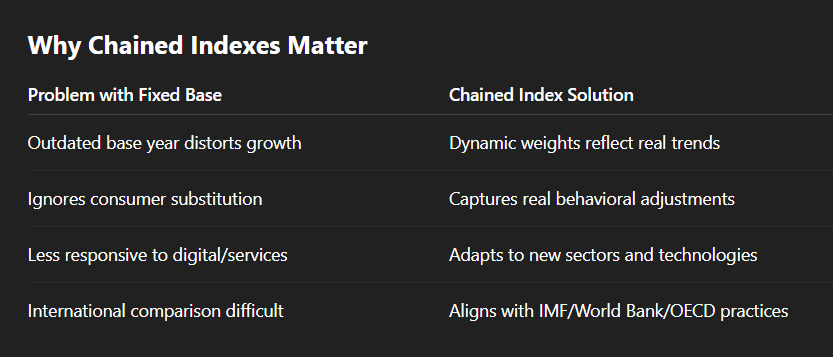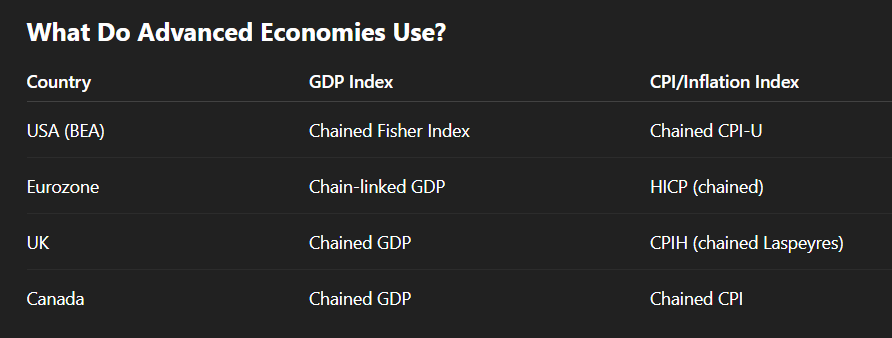The Complexity of GDP Growth
GDP, the total monetary value of goods and services produced within a country, reflects a multitude of influences beyond the control of any single administration. In recent years, India has been one of the world’s fastest-growing major economies, with real GDP growth recorded at 8.2% in FY 2023-24, according to the Ministry of Statistics and Programme Implementation. However, this growth cannot be attributed solely to the policies of the current government. Factors such as global demand, private investment, technological advancements, and past reforms play significant roles.
For instance, India’s economic liberalization in 1991, initiated under a Congress-led government, laid the foundation for its integration into the global economy. These reforms dismantled the restrictive Licence Raj, opened markets to foreign investment, and spurred growth in the services and manufacturing sectors. By 2004-2014, under another Congress-led administration, India’s GDP tripled from $0.7 trillion to $2.1 trillion, driven by global economic tailwinds and policies like the Mahatma Gandhi National Rural Employment Guarantee Act (MGNREGA), which boosted rural consumption. These historical reforms created a robust base that subsequent governments have built upon, demonstrating that economic growth is a cumulative process.
Global Economic Conditions
Global economic trends significantly impact India’s GDP growth, often beyond the control of its leaders. For example, India’s export sector, which accounted for $433.56 billion in FY25, relies heavily on demand from trading partners like the United States. A global slowdown, as seen in recent years due to geopolitical tensions and supply chain disruptions, can dampen export growth, affecting GDP. In Q1 FY25, India’s GDP growth slowed to 6.7%, partly due to weaker global demand, despite domestic policy continuity.
Conversely, favorable global conditions, such as stable commodity prices and cooling food inflation, have supported India’s growth. The International Monetary Fund (IMF) raised India’s FY25 growth forecast to 7% in July 2024, citing improved rural consumption driven by normal monsoons—a factor tied to weather patterns rather than leadership decisions. These external dynamics highlight that economic performance is not solely a reflection of leadership but also of global economic health.
Structural Reforms and Historical Context
India’s economic trajectory is shaped by structural reforms, many of which have long gestation periods. The Goods and Services Tax (GST), introduced in 2017, streamlined India’s tax system and boosted revenue collection, contributing to fiscal stability. However, its implementation was disruptive, slowing GDP growth to 6.6% in 2017-18. Similarly, the 2016 demonetization policy, aimed at curbing black money, led to economic strain, particularly for the informal sector, which accounts for nearly 50% of India’s workforce. These policies, while bold, caused short-term economic pain, suggesting that leadership decisions can sometimes hinder growth as much as they help.
In contrast, earlier reforms like the 2004-2014 focus on financial inclusion and rural infrastructure under the United Progressive Alliance (UPA) government laid the groundwork for sustained consumption-driven growth. Programs like MGNREGA increased rural incomes, contributing to a consumption multiplier effect that Deloitte estimates could add 0.6% to 0.7% to GDP in FY25-26. These long-term benefits underscore how past policies continue to shape current growth, regardless of who is in power.
Demographic and Technological Factors
India’s young and educated workforce is a key driver of economic growth. With over 1.2 billion internet users in 2023, India’s digital adoption has fueled sectors like IT and e-commerce, which contribute significantly to GDP. The services sector, accounting for over 50% of GDP, has benefited from global outsourcing trends, a phenomenon that began in the 1990s and gained momentum in the 2000s. This growth in services predates the current administration and reflects India’s structural advantages rather than leadership alone.
Moreover, India’s 118 unicorn startups, valued at over $354 billion as of January 2025, highlight the role of private entrepreneurship. Initiatives like Start-up India have supported this ecosystem, but the groundwork for India’s tech prowess was laid decades ago through investments in education and IT infrastructure, particularly during the 2000s when India emerged as a global IT hub.
Sectoral Contributions and Regional Disparities
India’s economic growth varies across sectors and regions, further complicating the leadership narrative. The manufacturing sector grew by 7% in Q1 FY25, driven by private investment and policies like the Production Linked Incentive (PLI) scheme. However, agriculture, which employs over 44% of the workforce, grew at a modest 2%, constrained by weather-related challenges and structural inefficiencies. These sectoral disparities show that growth is not uniform and depends on factors like climate and infrastructure, which no single administration can fully control.
Regional variations also play a role. States like Maharashtra and Tamil Nadu contribute significantly to GDP due to their industrial and service-driven economies, while states like Bihar lag due to weaker infrastructure. Policies that foster regional development, such as those implemented in the 2000s to boost southern states’ IT sectors, have had lasting impacts that current growth builds upon.
The Risks of Oversimplification
Attributing India’s GDP growth solely to leadership risks ignoring these broader factors and can lead to misguided policy priorities. For example, the current government’s focus on infrastructure spending has driven growth, with public investment in roads and railways spurring economic activity. However, high food inflation and a large informal sector continue to pose challenges, as seen in the modest 2.8% growth in urban fast-moving consumer goods in Q3 2024. These issues reflect structural constraints that require long-term solutions, not just leadership-driven initiatives.
Moreover, policies like demonetization and the rushed GST rollout highlight how leadership decisions can sometimes disrupt growth. In contrast, the steady progress in poverty reduction—halving extreme poverty between 2011 and 2019—was driven by inclusive policies and economic momentum from earlier decades. This suggests that sustainable growth requires a balance of continuity and innovation, rather than relying on the charisma or decisions of a single leader.
Conclusion
India’s GDP growth is a story of resilience and complexity, driven by a mix of global conditions, historical reforms, demographic strengths, and sectoral dynamics. While leadership plays a role in shaping policies, it is not the sole driver of economic success. The liberalization of the 1990s and the inclusive policies of the 2000s laid a strong foundation for India’s growth, which continues to benefit the economy today. Overemphasizing the role of current leadership risks ignoring these deeper forces and the contributions of past administrations. By recognizing the multifaceted nature of GDP growth, policymakers can focus on sustainable, inclusive strategies that address India’s structural challenges and capitalize on its unique strengths.

